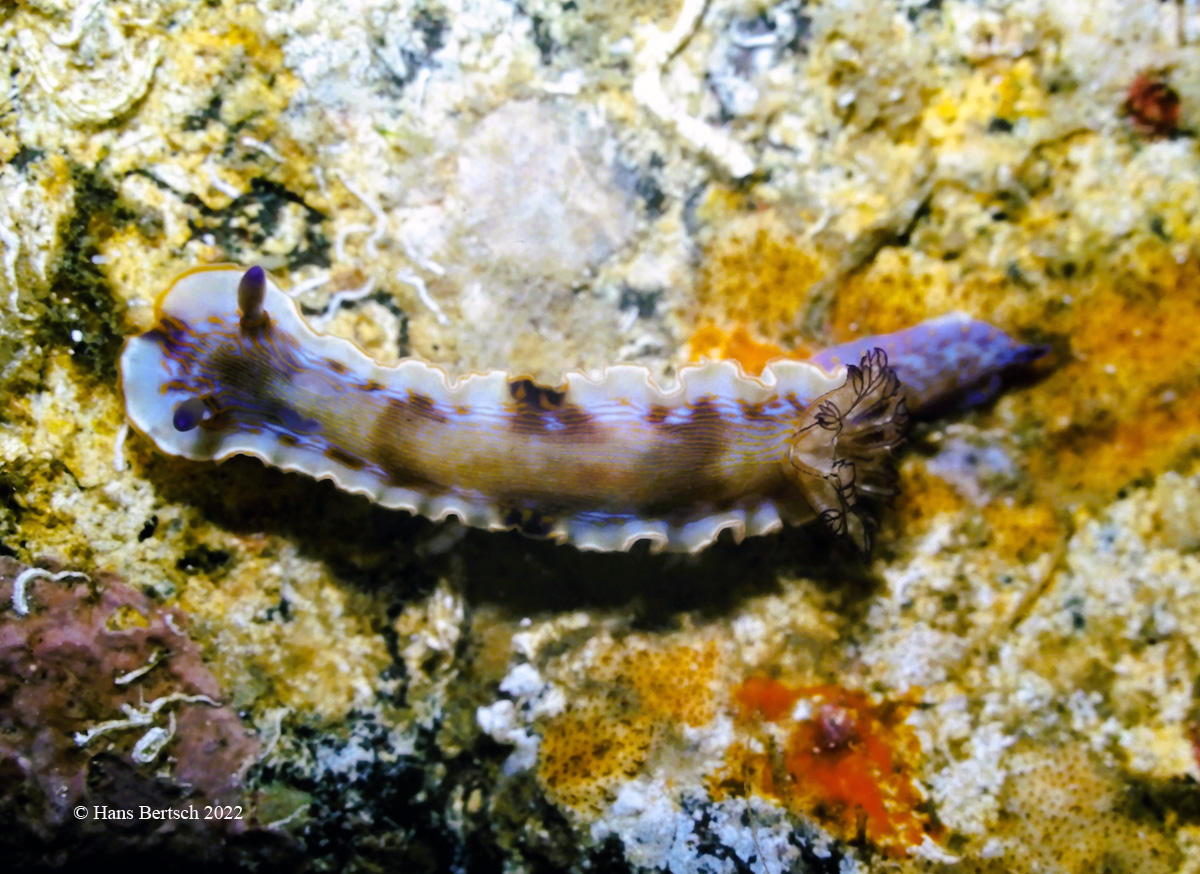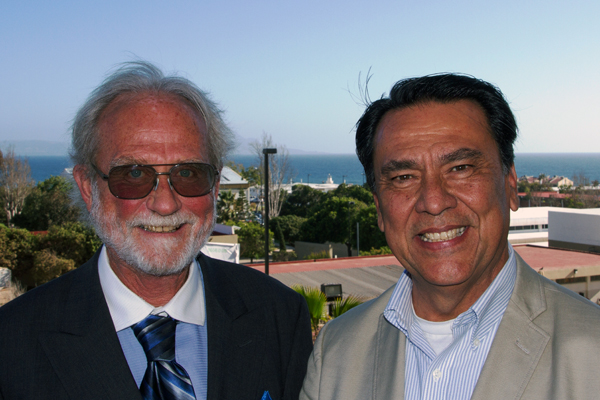 |
Felimare juliae
Point of Fort Jeudy, Grenada, 38 mm in length
24 August 1986, 20 feet deep (Photo by Hans Bertsch)
Felimare juliae DaCosta, Padula & Schrödl, 2010
This distinctive western Atlantic chromodorid can reach 57mm in length. The elongate body is slightly higher than wide. Background color is pale blue to pale green with small iridescent blue patches, and covered with 13-21 parallel longitudinal yellow or orange lines. The original published figure shows a richer orange coloration than other specimens that have been recorded from Brazil , Florida and Grenada (as Hypselodoris sp. 1 in Valdés et al., 2006).
The animal has an undulating mantle border, edged with yellow-orange; submarginal grayish band. Perfoliate rhinophores with 19-21 lamellae. Ten unipinnate, bipinnate or tripinnate yellowish gills with dark blue-black rachis. Rows of small whitish spheres, probably glands, shining through gill tissue.
Jaw rodlets stout to elongate, unicuspid. Radular formula 58-85 x 125-165.0.125-165. Rachis narrow, lacking a tooth. Lateral teeth hook-shaped, bicuspid.
This species is known from the southeastern and southern coast of Brazil, states of Rio de Janeiro, São Paulo and Santa Catarina; Point Ft. Jeudy, off southern Grenada, and Deerfield Beach and Boca Raton, Florida. The species was named in honor of Julia Carvalho Schrödl, the daughter of co-author Michael Schrödl.
Field Notes: I photographed this species on a two-week expedition to Grenada in August 1986. Operating out of St. George’s Harbor , my team and I made numerous dives along the southern and western coasts of the island. It was a Foundation for Field Research (formerly Have Mule Will Travel) Expedition, with land and marine based components. Our host boat was Jeff Hamann’s catamaran, the Gloriamaris, under the command of Captain Lloyd Austin. A small dinghy was used to transport the group from the catamaran to shore. The land team was searching for archaeological artifacts of the indigenous pre-contact Carib people. While there, we joined the island’s carnival celebrations The party was not held during the traditional pre-Lent Fat Tuesday; the Caribbean Islands’ residents used smart marketing in spreading the celebrations throughout the year, not just on one day. Jeff’s boat was equipped with an onboard scuba tank compressor, so Norris Ela and I and the rest of the divers always had sufficient air for the days’ diving. This expedition yielded the first survey of the marine life of this island; site descriptions, habitats, species interactions, and a list of the recorded flora and fauna are presented in Bertsch (1987).
Literature Cited
Bertsch, Hans. 1987. A first report of the marine habitats and biota of the island of Grenada (southeastern Caribbean). The Festivus 19 (3): 21-26.
DaCosta, Simone, Vinicius Padula & Michael Schrödl, 2010. A new species of Hypselodoris and a redescription of Hypselodoris picta lajensis (Nudibranchia: Chromodorididae) from Brazil. The Veliger 51(1): 15-25.
Valdés, Ángel, Jeff Hamann, David W. Behrens & Anne DuPont. 2006. Caribbean Sea Slugs: A Field Guide to the opithobranch Mollusks from the Tropical Northwestern Atlantic. Sea Challengers Natural History Book, Etc., Gig Harbor, Washington. vii + 289 pp.
Imperial Beach, Calif
Oct., 2022
Send Hans email at hansmarvida@sbcglobal.net
Photo by Craig Hoover.
 |
|